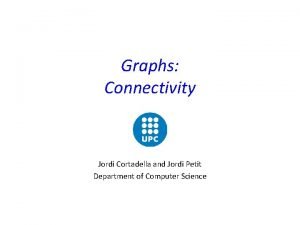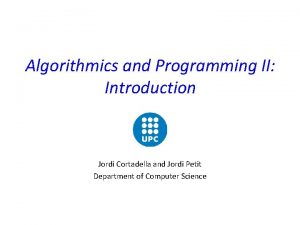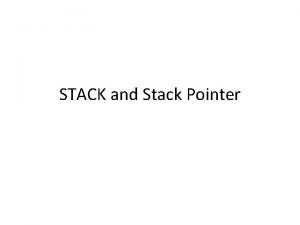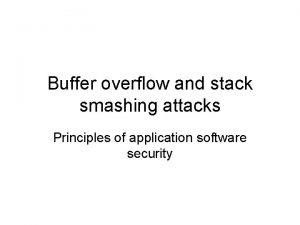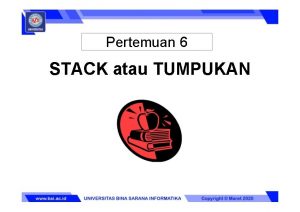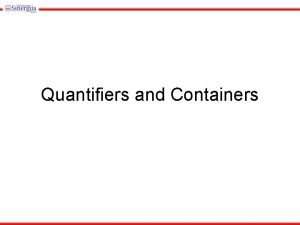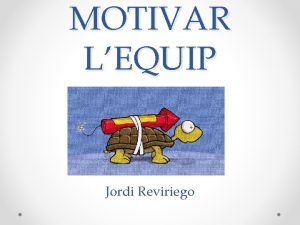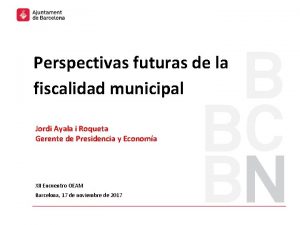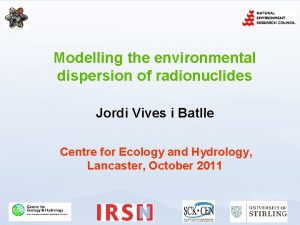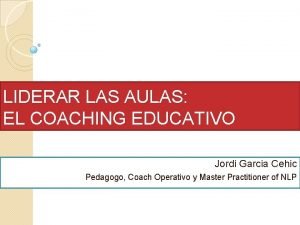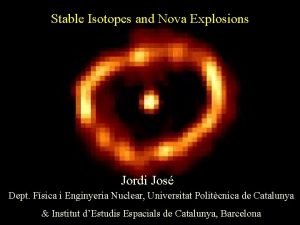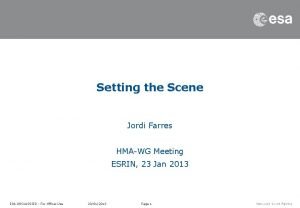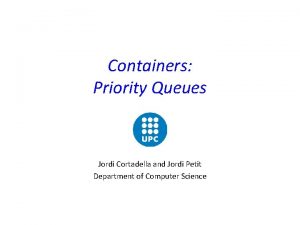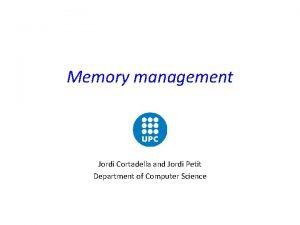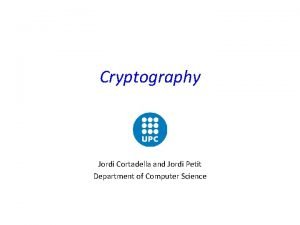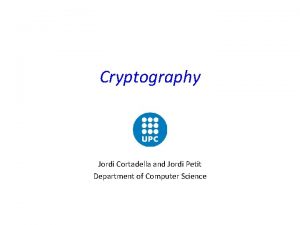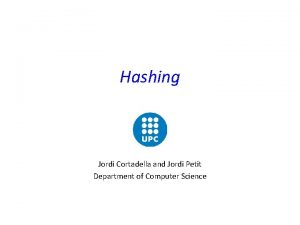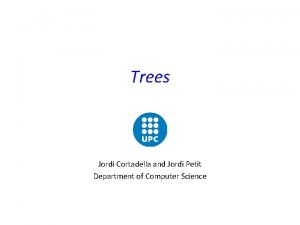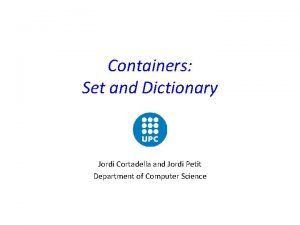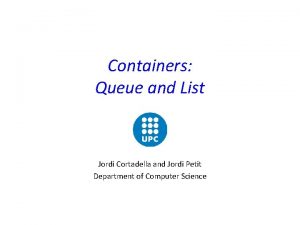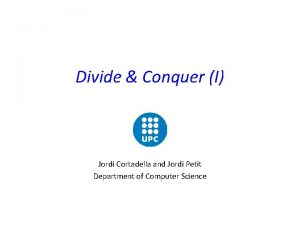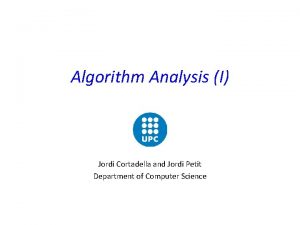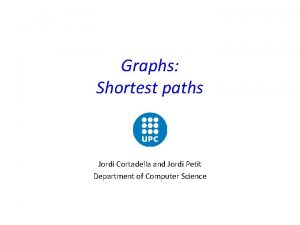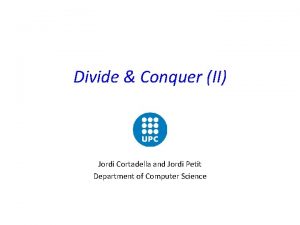Containers Stack Jordi Cortadella and Jordi Petit Department
















- Slides: 16

Containers: Stack Jordi Cortadella and Jordi Petit Department of Computer Science

The Stack ADT • A stack is a list of objects in which insertions and deletions can only be performed at the top of the list. • Also known as LIFO (Last In, First Out) push (insert an element at the top) pop (delete the most recently inserted element) 8 3 5 top (the most recently inserted element) empty (is there any element? ) 1 6 Containers: Stacks Note: pop and top generate an error on an empty stack © Dept. CS, UPC 2

The Stack ADT template <typename T> class Stack { public: // Default constructor Stack() {} … private: vector<T> data; }; • The definition can handle generic stacks of any type T. • The default constructor does not need to do anything: a zero-sized vector is constructed by default. Containers: Stacks © Dept. CS, UPC 3

The Stack ADT template <typename T> class Stack { public: … bool empty() const { return data. size() == 0; } const T& top() const { // Returns a const reference assert (not empty()); return data. back(); } T& top() { // Returns a reference assert (not empty()); return data. back(); } void pop() { assert (not empty()); data. pop_back(); } }; void push(const T& x) { data. push_back(x); } Containers: Stacks © Dept. CS, UPC 4

Balancing symbols • Balancing symbols: check for syntax errors when expressions have opening/closing symbols, e. g. , () [] {} Correct: [(){()[()]}()] Incorrect: [(){(}… • Algorithm (linear): read all chars until end of file. For each char, do the following: – If the char is opening, push it onto the stack. – If the char is closing and stack is empty error, otherwise pop a symbol from the stack and check they match. If not error. – At the end of the file, check the stack is empty. • Exercise: implement and try the above examples. Containers: Stacks © Dept. CS, UPC 5

Evaluation of postfix expressions • This is an infix expression. What’s his value? 42 or 968? 8 3 + 10 + 2 4 • It depends on the operator precedence. For scientific calculators, has precedence over +. • Postfix (reverse Polish notation) has no ambiguity: 8 3 10 + 2 4 + • Postfix expressions can be evaluated using a stack: – each time an operand is read, it is pushed on the stack – each time an operator is read, the two top values are popped and operated. The result is push onto the stack Containers: Stacks © Dept. CS, UPC 6

Evaluation of postfix expressions: example 6 5 2 3 + 8 + 3 + 3 2 5 6 push(6) push(5) push(2) push(3) Containers: Stacks 8 5 5 6 + push(8) 40 5 6 * 45 6 + © Dept. CS, UPC 3 45 6 push(3) 48 6 + 288 * 7

From infix to postfix a + b c + ( d e + f ) g a b c + d e f + g + Algorithm: – When an operand is read, write it to the output. – If we read a right parenthesis, pop the stack writing symbols until we encounter the left parenthesis. – For any other symbol (‘+’, ‘(‘), pop entries and write them until we find an entry with lower priority. After popping, push the symbol onto the stack. Exception: ‘(‘ can only be removed when finding a ‘)’. – When the end of the input is reached, all symbols in the stack are popped and written onto the output. Containers: Stacks © Dept. CS, UPC 8

From infix to postfix Priority + ( a + b c + ( d e + f ) g Output a Containers: Stacks + ab © Dept. CS, UPC 9

From infix to postfix Priority + ( Containers: Stacks a + b c + ( d e + f ) g + abc + ( + abc + © Dept. CS, UPC 10

From infix to postfix Priority + ( Containers: Stacks a + b c + ( d e + f ) g ( + abc +de + ( + abc +de © Dept. CS, UPC 11

From infix to postfix Priority + ( Containers: Stacks a + b c + ( d e + f ) g + ( + abc +de f+g © Dept. CS, UPC 12

From infix to postfix a + b c + ( d e + f ) g Priority + ( abc +de f+g + Suggested exercise: • Add substraction (same priority as addition) and division (same priority as multiplication). Containers: Stacks © Dept. CS, UPC 13

EXERCISES Containers: Stacks © Dept. CS, UPC 14

Interleaved push/pop operations Suppose that an intermixed sequence of push and pop operations are performed. The pushes push the integers 0 through 9 in order; the pops print out the return value. Which of the following sequences could not occur? a) b) c) d) 4321098765 4687532901 2567489310 4321056789 Source: Robert Sedgewick, Computer Science 126, Princeton University. Containers: Stacks © Dept. CS, UPC 15

Middle element of a stack • Containers: Stacks © Dept. CS, UPC 16
 Jordi cortadella
Jordi cortadella Language telegram
Language telegram Characteristics of stack
Characteristics of stack Stack smash attack
Stack smash attack Contoh soal stack dan jawabannya
Contoh soal stack dan jawabannya Containers quantifiers
Containers quantifiers Jordi reviriego
Jordi reviriego Jordi ustrell
Jordi ustrell Jordi benlliure
Jordi benlliure Jordi juanico sabate
Jordi juanico sabate Jordi timmers
Jordi timmers Jordi ayala roqueta
Jordi ayala roqueta Jordi vives i batlle
Jordi vives i batlle Jordi garcia cehic
Jordi garcia cehic Jordi graells costa
Jordi graells costa Jordi npa
Jordi npa Jordi scene
Jordi scene
